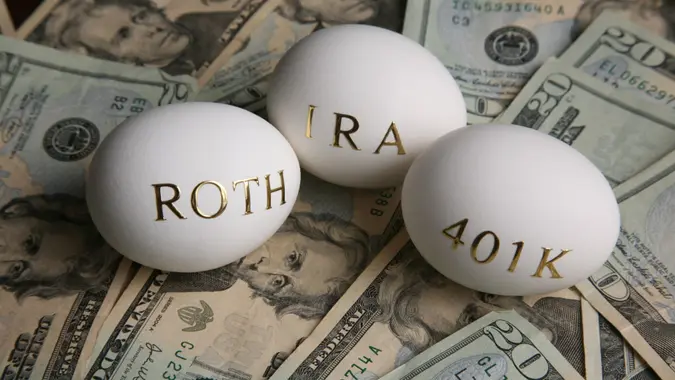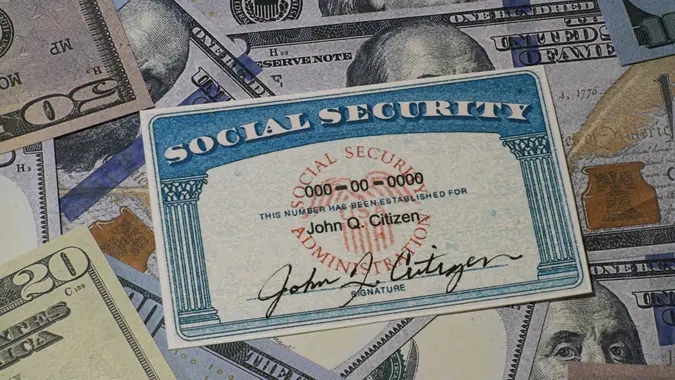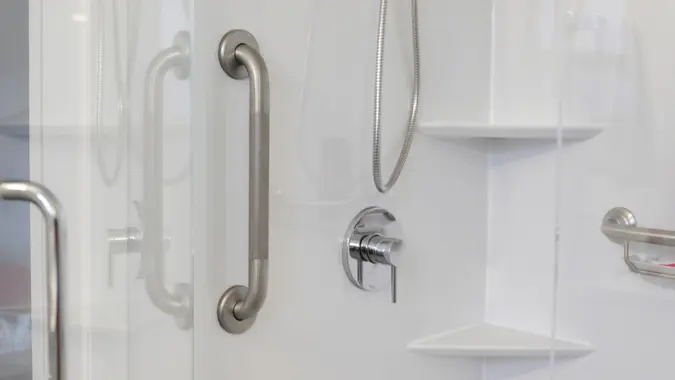The Best $5K You Can Spend Every Year in Retirement

Commitment to Our Readers
GOBankingRates' editorial team is committed to bringing you unbiased reviews and information. We use data-driven methodologies to evaluate financial products and services - our reviews and ratings are not influenced by advertisers. You can read more about our editorial guidelines and our products and services review methodology.

20 Years
Helping You Live Richer

Reviewed
by Experts

Trusted by
Millions of Readers
For many people, retirement means living on a fixed income and cutting costs to reduce expenditure. And while these are both sound strategies to help stretch the dollar, sometimes the better option is to spend a little instead.
If you have a little extra money, say $5,000, you might want to allocate it toward things that boost your future financial security and personal happiness. This could be low-risk investments or it could be checking off something on your bucket list.
Whatever the case, here are some of the best ways to spend $5,000 each year in retirement.
Invest in Low-Cost Index Funds
Retirement doesn’t have to mean an end to investing. Whether you want to continue building wealth for your heirs or you just like the idea of seeing your money grow — both are perfectly valid — you might want to invest in low-cost index funds. They don’t require much time or energy, so you can still enjoy a leisurely retirement lifestyle while watching your money grow.
Low-cost index funds yield an average annual return of 7%, according to Brent Chandler, the founder and CEO of FormFree. Say you invest $5,000 every year for 20 years — from age 65 to 85. You’d have around $224,000 in index funds which would be a hefty chunk of cash for your loved ones.
Spend It on Things You Love
Jay Zigmont, a certified financial planner (CFP) and the founder of Childfree Wealth, encourages retirees with an extra $5,000 after expenses to enjoy the money, give it away or do both.
“You need to find a balance between saving and enjoying your life,” he continued. “If your needs and goals are met, any extra money is discretionary.”
Zigmont specifically recommends making a list of what you enjoy doing and/or who you would like to help. Of course, you can also put that money toward accomplishing things on your bucket list. But even if you don’t have a bucket list, you should still be able to treat yourself and enjoy your hard-earned money during your retirement.
Place It Into a Revocable Living Trust
A revocable living trust (RLT) lets you decide how you want your assets to be managed both while you’re still alive and once you’re gone. The FDIC will insure your RLT up to $250,000 (or up to $1,250,000 if you have five accounts with five eligible beneficiaries or fewer). This means your money’s safe until it’s time to pass it on.
According to Marty Burbank, an expert in estate planning and elder law at OC Elder Law, an RLT “not only secures your assets but also streamlines the inheritance process for your heirs, avoiding the often lengthy and costly probate process. Setting this up can initially seem complex, but it provides significant peace of mind regarding the handling of [your] assets after passing.”
Use It for Supplemental Healthcare
Although Medicare kicks in when you turn 65, you might still want to invest in some additional healthcare policies — such as a comprehensive Medigap plan.
You could also put that $5,000 into a health savings account (HSA). This is a tax-advantaged account you can use to pay for qualified medical expenses your other insurance doesn’t cover. If you don’t already have an HSA, you might not find as much value in the plan as you would have if you’d started it earlier, though.
Regardless, it never hurts to have extra money set aside for things your healthcare policy doesn’t cover — whether that’s long-term care at a living facility or additional prescription medications.
“Health costs often become unpredictable as one ages, and being prepared can prevent these expenses from eroding other retirement savings,” said David Blain, a chartered financial analyst (CFA) and the founder and CEO at BlueSky Wealth Advisors.
“From my leadership in financial strategy formulation, I’ve seen how such proactive measures can safeguard both the financial and physical well-being of retirees,” Blain added.
And if you don’t end up using the money you set aside, you can always leave it to the beneficiaries in your will.
Invest in Long-Term Care Insurance
According to a 2022 study conducted by the Department of Health and Human Services (HHS), a little over half of people ages 65 and up will need long-term care at some point in their lives. While costs vary by location and need, the annual median cost for a private room in a nursing home in the U.S. is $116,800, as found by the Genworth 2023 Cost of Care Survey.
Unless you already have over a hundred grand set aside for long-term care, you might want to get insurance — though it may be better to purchase this before retiring.
“With medical costs continuing to rise, particularly for seniors, having long-term care insurance can mitigate the risk of depleting other retirement savings should extensive healthcare or nursing care be needed,” Burbank said. “I’ve seen numerous clients benefit from the security it provides.”
Put It Toward Your Personal Knowledge
You’re never too old to learn, so you might as well put that $5,000 toward improving your own knowledge, especially when it comes to financial literacy. This could mean paying for a workshop, online course or some books. You might not even need to spend all $5,000 — and certainly not every year.
Blain suggested using that extra money to learn about investments, estate planning and current tax laws. That way, you’ll have a better understanding of your own financial portfolio as well as how best to manage and build it.
And if financial literacy doesn’t appeal to you, or if you already have a solid grasp on the topics you need to know, you can always put the $5,000 toward other things you want to learn about.
Diversify Your Investments Even Further
You should assess and adjust your investments over the course of your life based on where you’re at right now and where you want to be. If you feel like your current asset profile is too risky — or not risky enough — allocate the $5,000 to making a change.
“Diversify your investments beyond stocks and bonds,” Chandler said. “Consider real estate investment trusts (REITs), peer-to-peer lending or dividend-paying stocks to generate additional income streams and act as a buffer against inflation or unexpected expenses in retirement.”
Pay Off Any Remaining Debts
If you still have debt, but you also have an extra $5,000 a year lying around, use it to take bigger chunks out of what you owe.
“If any high-interest debt remains, such as credit card debt, using part of the $5,000 to reduce this burden can save a significant amount in interest payments,” said John F. Pace, a certified public accountant (CPA) at Pace & Associates, CPAs.
Doing this can strengthen your own financial stability while cutting down on any stress those lingering monthly payments might be causing you.
More From GOBankingRates
Sources
- HHS Office of the Assistant Secretary for Planning and Evaluation, Long-Term Care Services and Supports for Older Americans: Risks and Financing, 2022 Research Brief
- Genworth, Cost of Care Survey Results for 2023: Twenty Years of Tracking Long-Term Care Costs
 Written by
Written by  Edited by
Edited by 

























